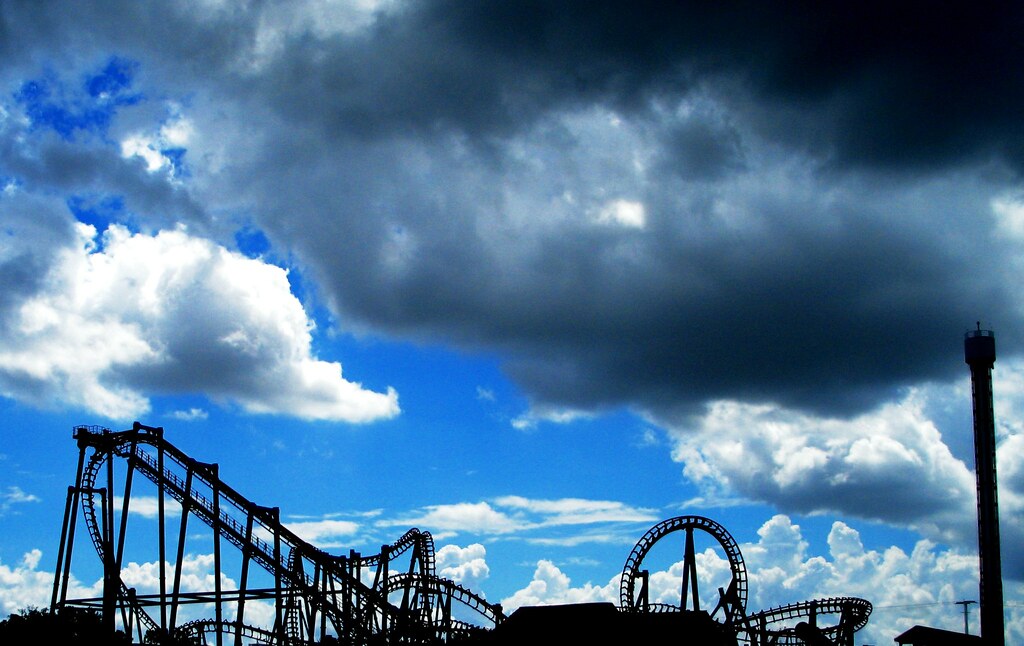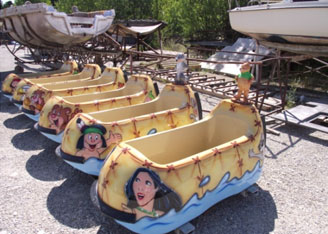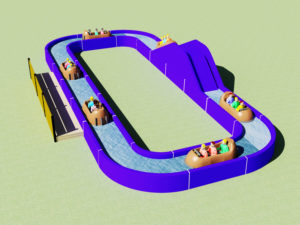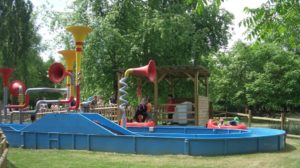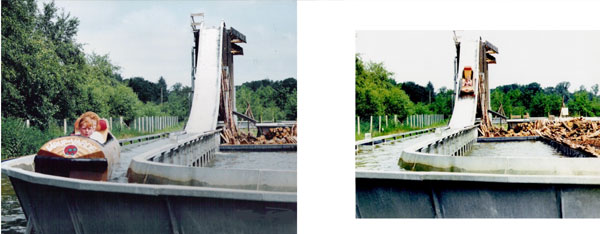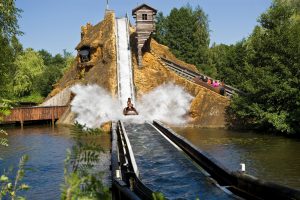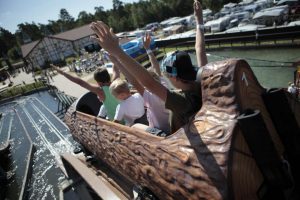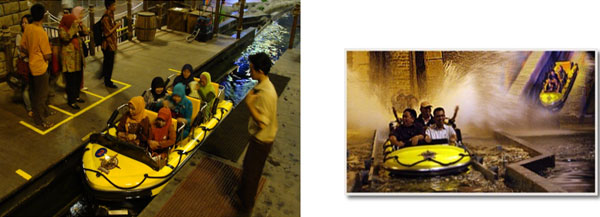
How do you choose a day for going to go to a theme park…? Do you base your decision on the predicted busyness that day, if you’re in the mood for some fun, or because you have a day off? All reasonable factors to take into account, but chances are it hugely comes down to the weather forecast for that day.
We all know that there’s nothing better than picking the perfect afternoon to spend out in the sunshine without a cloud in the sky. And nothing worse than being caught out by some unexpected rain showers that put a damper on your day out. But how does the weather affect the decisions master planners make when designing a park? From ride mix to location, to opening times and closure protocols we deep dive into how weather affects every aspect of operating a theme park.
Weather Proof Ride Mix
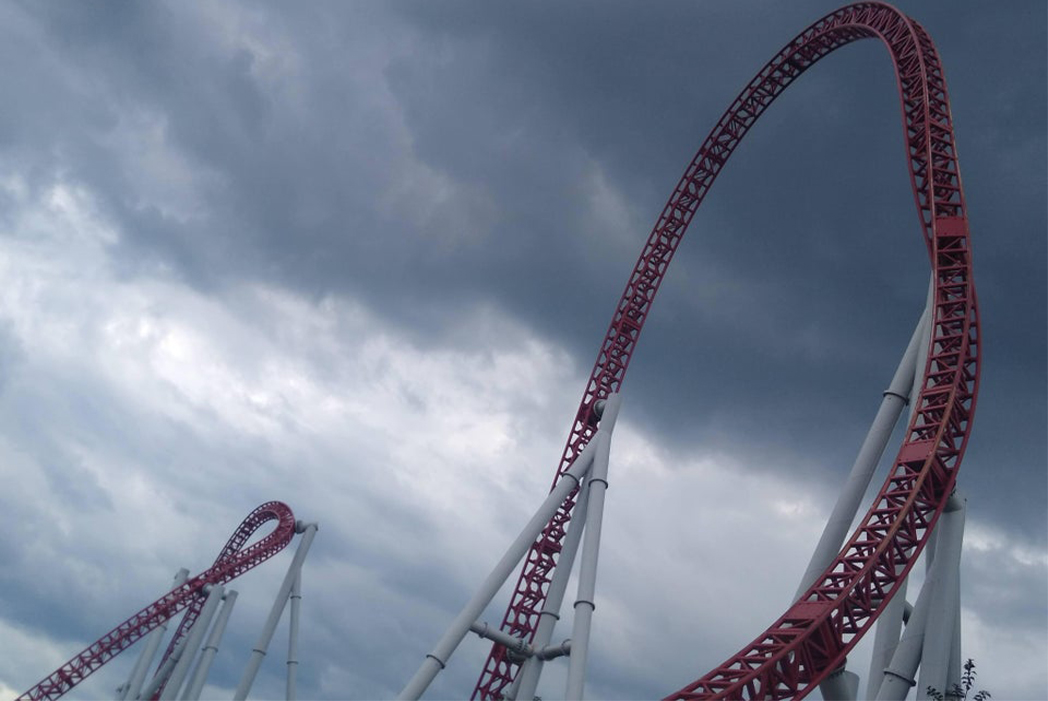
One of the biggest attractions to parks nowadays are draw-dropping rollercoasters, but when the weather turns, they’re the first to close their queues and send guests scrambling. Rollercoasters are probably the most weather conscious of all the rides and have to be conscious of the temperature, as well as a wide variety of weather patterns. Too cold and they’ll run too slowly, caused by friction on the wheels, with brake fluids or lubricants also not performing properly. Rollercoasters are also very sensitive to extreme weather, becoming a liability in high winds and heavy rain, causing closures with concerns of wind affecting the acceleration and deceleration of the trains and rain affecting braking effectiveness and sensors malfunctions. Lightning is also a big hindrance to parks in certain areas of the world – like in tropical climates where storms are daily – causing these tall, metal structures to be a big attraction to the electrically-charged weather, mimicking giant lightning rods.
Therefore, something that a lot of parks, that have largely varying weather, have to take into account is what their closure procedures are, and do they have plenty for guests to do as they wait for bad spells to pass? It all comes down to having an effective ride mix. As if parks don’t have a diverse enough ride selection, the rides that can stay open become mobbed and unable to cope with the sudden increase in demand resulting in half the park’s visitors cramming on to the only couple rides still open – just to stay dry. And if the rain persists, they’ll have a LOT of unhappy customers.
Some rides are essentially weatherproof – Indoor rides, which can take many forms in the way of Dark Rides, Media Based Rides and Flying Theatres. Immune to any weather really and can run year-round without a hitch. While some can be perfect for the more extreme ends of the spectrum – Water Rides – that can cool you off when it’s too hot and if it’s pouring with rain, you’re already wet so what does it matter if you get soaked. Making sure that attractions offer adequate shelter in queues can also make a big impact as many visitors will happily stand and wait, knowing that by the time they get to the front, chances are the weather will have subsided anyway. Parks have to assess what they encourage guests to do in bad weather and how they openly communicate with their guests to allow them to make informed decisions about how they plan their day in the park. Because while some visitors may actually enjoy rainy days, taking advantage of the quieter parks knowing that they can enjoy their day more flexibly with the absence of crowds and ability to ride what remains open multiple times as queues are shorter, some don’t want to waste their time waiting for a storm to pass and would rather come back another day.

Location, Location, Location
The location of a Theme Park in the world can make a big impact on how they can operate and what needs to be taken into account when designing them. Florida’s parks, while they have a lot of outdoor and water rides to complement their year-round sunshine, have a lot of indoor attractions too. Knowing that often people need to get out of the heat to cool off in the A/C as well as needing weatherproof attractions in the summer during their daily late-afternoon storms. They’re also able to stay open year-round due to the higher temperatures. While a large proportion of Theme Parks only open seasonally when the weather is nicer and warmer in the summer months as they don’t have the benefits of a tropical climate like some places. Most of Europe’s and more northernly American parks only work at full capacity from March/April and close after their Halloween celebrations, as during the winter months it’s too cold and weather is too unpredictable. Almost all parks also adjust their opening hours throughout the year based on the hours of daylight and how warm it stays till later in the day.
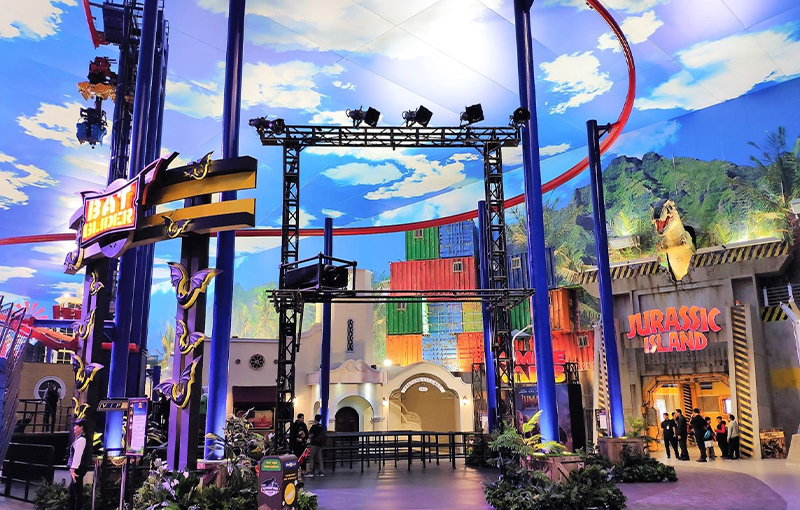
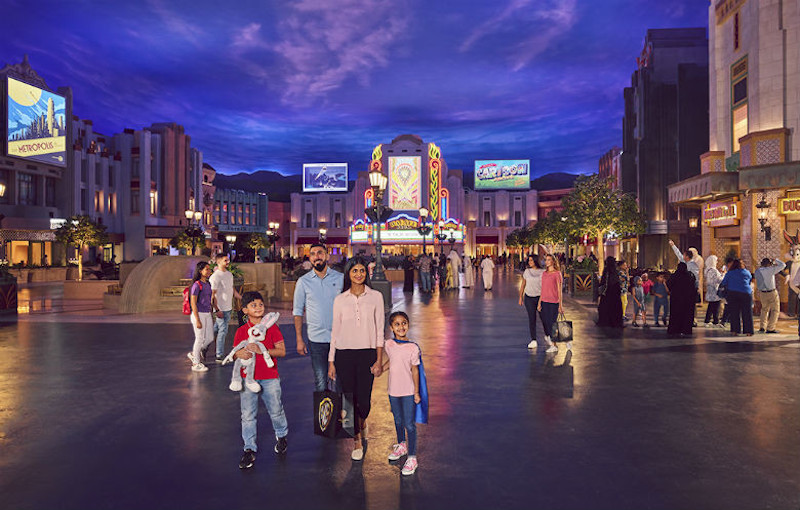
As extreme cases of weather become more typical, facilitated by global warming and its effects, the way that we design theme parks will change. We’re already seeing a rise in indoor theme parks in a bid to tackle mother nature’s turbulent climate conditions, popular across the Middle East and Asia where temperatures can soar to unbearable levels and typhoons and flooding are prevalent making it impossible for such attractions to operate effectively. Themed down to the last detail including using lighting to emulate the sky indoors, the climate-controlled environments are the perfect solution to combatting the barriers that the weather brings allowing these parks to not only stay open all year round but also late into the night for evening events and celebrations. Some may argue that indoor theme parks don’t have the same appeal to spending the day outside and lack the ability to attract tourists in the same way – as many people go on vacation to enjoy the great weather outdoors not to spend more time inside. And while they are more expensive to construct and maintain, the counter would be that their attendance isn’t going to be impacted as heavily by weather.
COVID's Impact
In this current COVID-19 conscious climate, outdoor attractions are obviously going to have much more appeal, seen as safer and with fewer chances of transmission, but with a potential end in sight with the vaccine rollout across the world underway the need for outdoor accommodations may not be a concern for much longer.
Taking weather into account ALWAYS
Regardless, as global warming continues to affect our planet at an alarming rate, theme parks, along with many other things, will have to adapt to the changing weather and more extreme variations. Planning for this future is integral when designing and building new parks nowadays. Whether it be ensuring a wide variety of rides at a park, giving visitors options on days with challenging weather or ensuring plenty of areas of shelter in queue lines that are entertaining and themed when guests have to wait for prolonged periods. To picking a suitable place – city, country or region – to build that new theme park, modified for that particular climate to allow it to operate as effectively as possible year-round. Doing so will allow our industry to continue to thrive and adapt as visitor demands and expectations develop with our changing climate.
